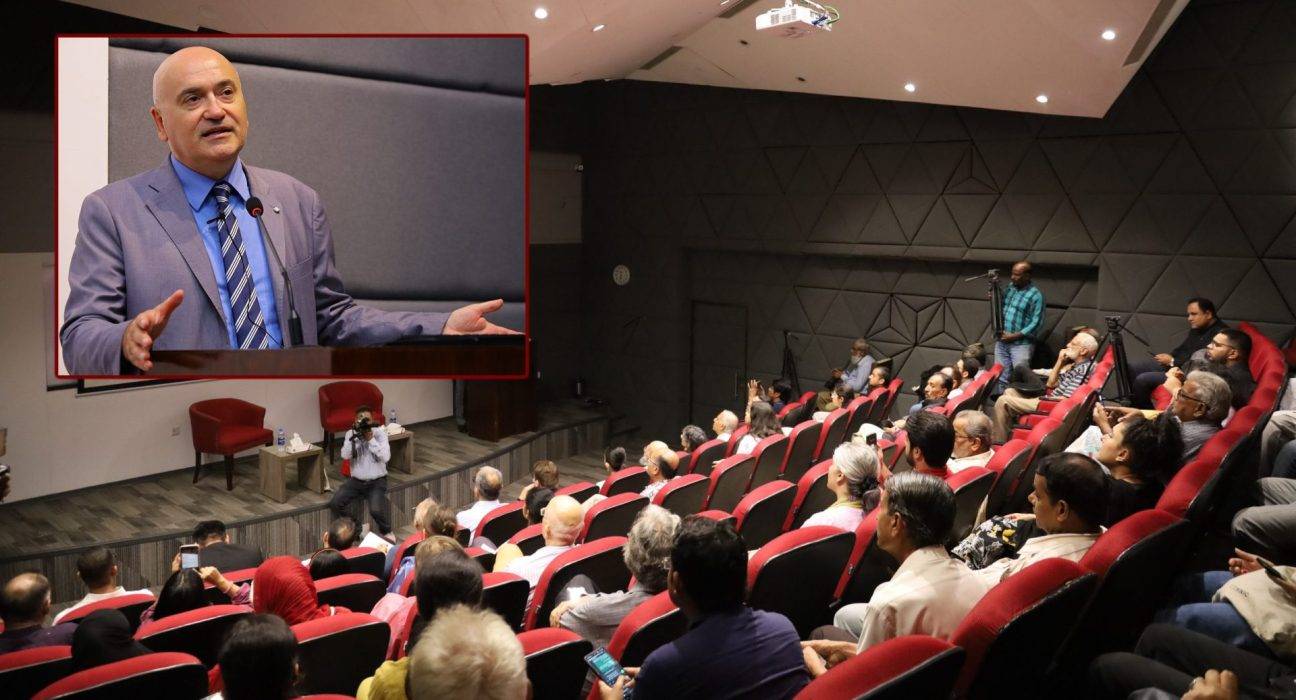The Institute of Business Administration (IBA) Karachi, held an insightful lecture titled “Printing Holy Texts: The Case of the Qur’an in Comparative Perspective” on Monday at its City Campus. The event was organized by the School of Economics and Social Sciences (SESS) and featured distinguished scholar, Professor Roberto Tottoli, Rector of the University of Naples, L’Orientale. The lecture attracted a diverse audience of students, faculty, historians, and scholars.
Professor Tottoli, an eminent Arabist and authority on Islamic history and Qur’anic manuscript traditions, is renowned for his expertise in the history of European translations of the Qur’an. In his lecture, he delved into the historical trajectory of Qur’anic printing in Europe, focusing on the technical challenges and cultural factors that shaped its evolution.
Dr S Akbar Zaidi, Executive Director of IBA Karachi, warmly welcomed Professor Tottoli and commended his scholarship, setting the stage for a thought-provoking session. Dr Zaidi noted the significance of hosting international experts and praised Tottoli’s research, which sheds light on the complexities of printing sacred texts.
Professor Tottoli’s presentation traced the early European printing of the Qur’an, attributing its origins to the technical expertise available in Europe and the growing scholarly interest in Islam and Arabic studies. He argued that the obstacles to early Qur’anic printing were less about socio-economic or cultural resistance and more about the technical difficulties of reproducing the intricate Arabic script. The lack of familiarity with Arabic letters, vowel markers, and pauses presented a major challenge in ensuring accuracy and quality in early printed editions.
Highlighting the transition to modern printing, Professor Tottoli discussed the rise of lithographic production in the 19th century, which served as a bridge between manuscript work and printing. He illustrated this point with examples from Ottoman Turkey, Egypt, and Morocco, showcasing the evolution of Qur’anic calligraphy through the centuries. Special attention was given to the Taj Company Qur’an, known for its unique Indo-Pak calligraphic style, which remains widely used in regions such as South Asia and Indonesia.
Throughout the lecture, Professor Tottoli emphasized the diversity of calligraphic traditions across the Islamic world and their contribution to the visual and spiritual richness of the Qur’an. He concluded by noting that the Qur’an is the most printed book in the world, and its history of production offers a wealth of academic inquiry.
The session concluded with an engaging Q&A session, where attendees delved deeper into the topics discussed. As a gesture of gratitude, Dr Zaidi presented Professor Tottoli with a memento featuring Arabic calligraphy, acknowledging his valuable contribution to the academic community.
The lecture marked yet another successful event at IBA Karachi, reinforcing the institution’s commitment to fostering intellectual exchange and global scholarship.
Related: IBA Karachi Hosts Seminar on Building a Sports Ecosystem
Discover more from Academia Magazine
Subscribe to get the latest posts sent to your email.










Be the first to review “IBA Hosts Enlightening Lecture on Printing Holy Texts”